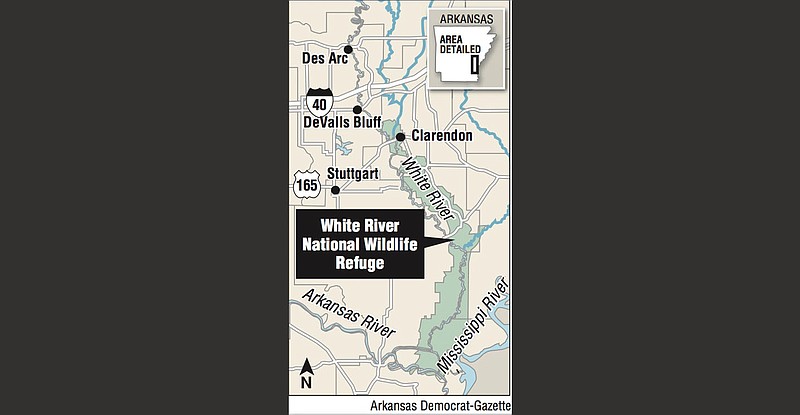Possible dicamba damage has been found at the Dale Bumpers White River National Wildlife Refuge, prompting its manager to file a complaint with the state Plant Board.
"This is a very important piece of land, I just wanted to make sure I lived up to my responsibilities and reported the damage to the Plant Board," Charles "Bo" Sloan, manager of the 160,000-acre refuge, said. "I guess I saw it as a civic duty."
Filed about two weeks ago, Sloan's complaint centers on damage to trees, especially to sycamores, around St. Charles, where the refuge has its headquarters and visitors center, and south to the Ethel community, also in Arkansas County.
Since filing the complaint, Sloan said he has seen damage in the refuge at Tichnor, Maddox Bay and Jack's Bay.
Sloan's complaint is one of 337 filed as of Wednesday afternoon with the Plant Board, a division of the Department of Agriculture. The board received about 200 complaints in each of 2018, 2019 and 2020.
Established in 1935 and managed by the U.S. Fish and Wildlife Service, the refuge ranges from a quarter mile to 10 miles wide and stretches for about 60 miles from Clarendon south to near where the White River empties into the Mississippi River. Crops, particularly soybeans, surround the refuge. The refuge is in Arkansas, Monroe, Phillips and Desha counties.
The refuge is home to more than 70 species of trees, including overcup and Nutall oaks, sweet gum, water hickory, sweet pecan, water tupelo and bald cypress. The state's largest tree also is in the lower part of the refuge, a bald cypress 126 feet tall and 523 inches around, according to the state Department of Agriculture's Champion Tree program. Two other champion trees -- a Nutall oak and a water hickory -- are within the refuge.
Sloan said he hasn't heard back from Plant Board inspectors who, in a typical case, collect samples "I can understand that they're swamped by complaints," Sloan said.
Sloan said he suspects trees in the refuge have been damaged before by dicamba but didn't file complaints. "I think we didn't know what we were looking at back then," he said.
More complaints have been filed in Arkansas County this year than ever before in the state's five-year saga with the herbicide. As of Wednesday, 73 dicamba complaints were based in Arkansas County, compared with a total of four from 2017-20. Cross County had 29 complaints; Monroe and Woodruff counties had 24 each.
Vic Ford, UA vice president for agriculture and natural resources, toured the refuge with Sloan and found dicamba symptomology on several tree species but not the bald cypress. Some trees, most notably the sycamore, are more sensitive to dicamba than others, Ford said.
"You'd see clumps of trees with damage and then, maybe 50 or 60 yards away, another clump of damaged trees," Ford said. "None of the trees were damaged to a point where it will kill them, but I can't speak as to the effect of being exposed to repeated applications."
Most damage was higher up, toward a tree's canopy, and visible from just driving along the state highways nearest the refuge and along roads through the property, Ford said.
"You know how this stuff [dicamba] is," Sloan said. "The overall damage in our part of the world is pretty extensive from what the Plant Board and the Extension Service agents are saying. I've got damage on my personal property too; we've got it on the refuge. You can see it from the road. Even a novice like me can see it."

